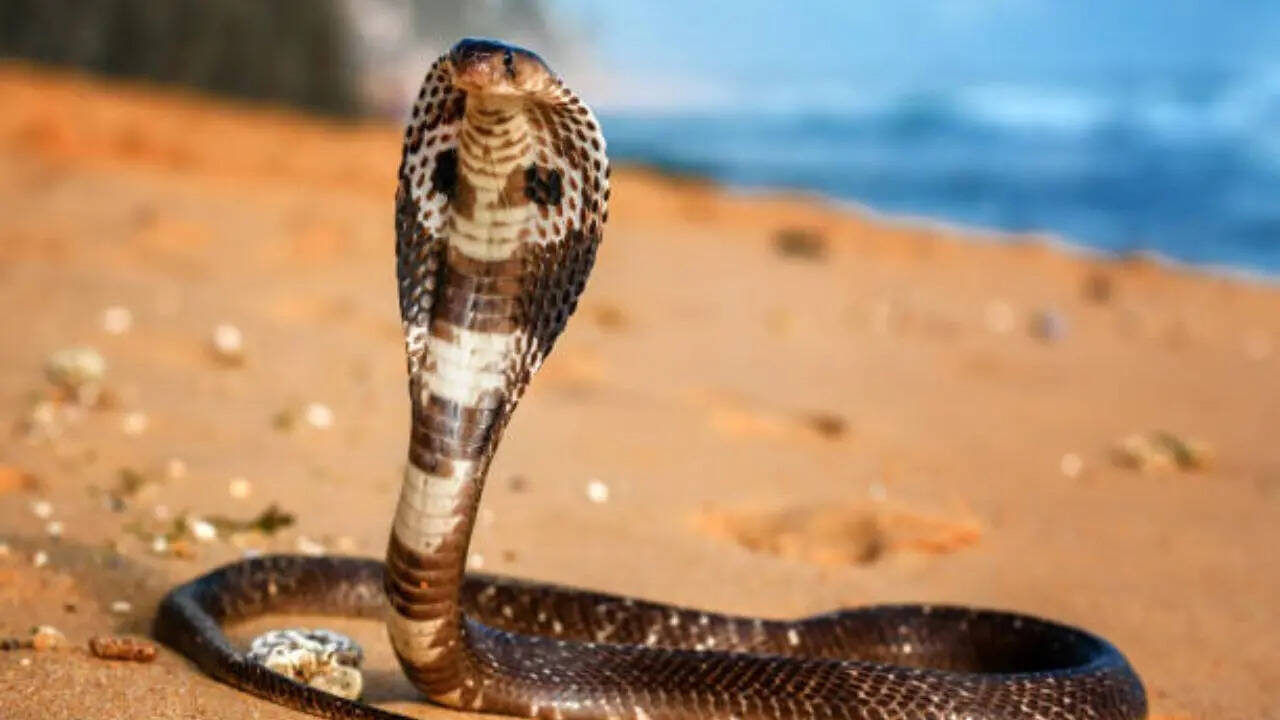Health
Snake Rescuer Dies After Cobra Bite During Rescue Attempt

A snake-catcher from Madhya Pradesh has tragically died after being bitten by a cobra he was attempting to rescue. The incident occurred when Deepak Mahavar, a 35-year-old self-taught snake rescuer from Guna district, draped the snake around his neck while riding his bicycle. Eyewitnesses reported that Mahavar had initially placed the cobra in a glass container but, in a moment of haste, decided to secure it around his neck. Unfortunately, the cobra bit him on the hand, leading to a rapid decline in his health.
Despite being rushed to a nearby hospital, Mahavar could not be saved. He had initially been treated and discharged but returned later that evening in critical condition, according to Man Singh Thakur, the Additional Superintendent of Police. “He was brought back to the hospital in critical condition but died before further treatment could begin,” Thakur told the Indian Express.
Understanding Snake Bites
A snake bite occurs when a snake’s fangs penetrate the skin, potentially leading to serious injuries or even death. While snakes may bite to capture prey or defend themselves, the emotional impact of an encounter can be just as significant as the physical harm. Experts note that the majority of snake bites, especially from venomous species like cobras, require immediate medical attention.
Venomous snakes possess different types of venom that affect the body in various ways. Some of the key types include:
– **Cytotoxins**: These cause swelling and tissue damage.
– **Haemorrhagins**: These disrupt blood vessels, leading to bleeding.
– **Neurotoxins**: These can result in paralysis or damage to the nervous system.
– **Myotoxins**: These break down muscle tissue.
According to medical professionals, between 50% and 70% of venomous snake bites result in envenoming, emphasizing the need for urgent medical care.
Symptoms and Emergency Response
Recognizing the symptoms of a snake bite is crucial for effective treatment. Symptoms may include:
– Swelling at the bite site
– Skin color changes
– Bleeding from the wound
– Puncture wounds
– Sharp pain
– Sweating or drooling
– Nausea and vomiting
– Dizziness and blurred vision
If bitten, it is essential to act quickly. Authorities recommend the following first aid steps while awaiting emergency medical services:
– Remain calm and inform those nearby about the incident.
– Move to a safe area away from the snake.
– Remove tight clothing or jewelry.
– Gently clean the bite area with soap and water.
– Cover the wound with a clean bandage.
– Note any swelling or changes in the bitten area and the time they occurred.
When emergency responders arrive, they can administer antivenom to counteract the effects of the snake’s venom, which is critical in preventing serious injury or death.
The story of Deepak Mahavar serves as a sobering reminder of the dangers associated with wildlife rescue efforts and the importance of understanding the risks involved.
-

 World5 months ago
World5 months agoSBI Announces QIP Floor Price at ₹811.05 Per Share
-

 Lifestyle5 months ago
Lifestyle5 months agoCept Unveils ₹3.1 Crore Urban Mobility Plan for Sustainable Growth
-

 Science4 months ago
Science4 months agoNew Blood Group Discovered in South Indian Woman at Rotary Centre
-

 World5 months ago
World5 months agoTorrential Rains Cause Flash Flooding in New York and New Jersey
-

 Top Stories5 months ago
Top Stories5 months agoKonkani Cultural Organisation to Host Pearl Jubilee in Abu Dhabi
-

 Sports4 months ago
Sports4 months agoBroad Advocates for Bowling Change Ahead of Final Test Against India
-

 Science5 months ago
Science5 months agoNothing Headphone 1 Review: A Bold Contender in Audio Design
-

 Top Stories5 months ago
Top Stories5 months agoAir India Crash Investigation Highlights Boeing Fuel Switch Concerns
-

 Business5 months ago
Business5 months agoIndian Stock Market Rebounds: Sensex and Nifty Rise After Four-Day Decline
-

 Sports4 months ago
Sports4 months agoCristian Totti Retires at 19: Pressure of Fame Takes Toll
-

 Politics5 months ago
Politics5 months agoAbandoned Doberman Finds New Home After Journey to Prague
-

 Top Stories5 months ago
Top Stories5 months agoPatna Bank Manager Abhishek Varun Found Dead in Well









